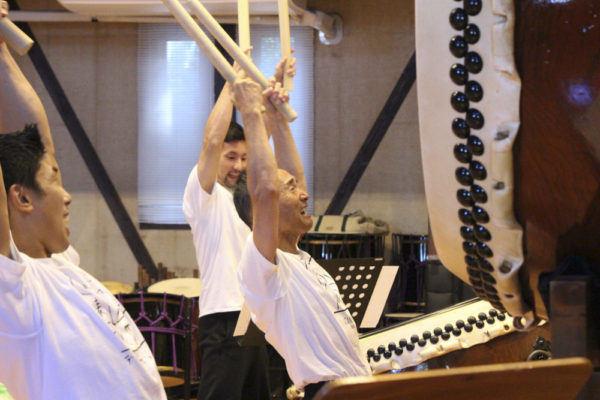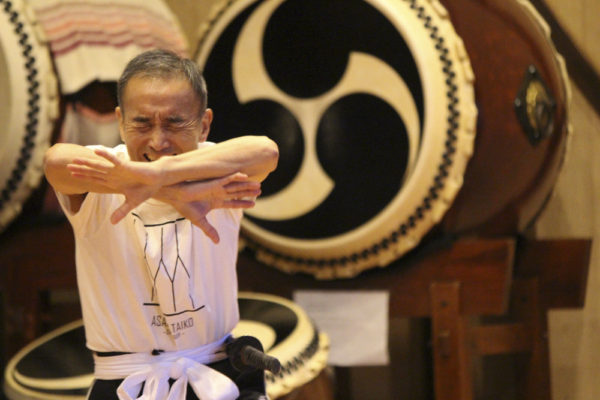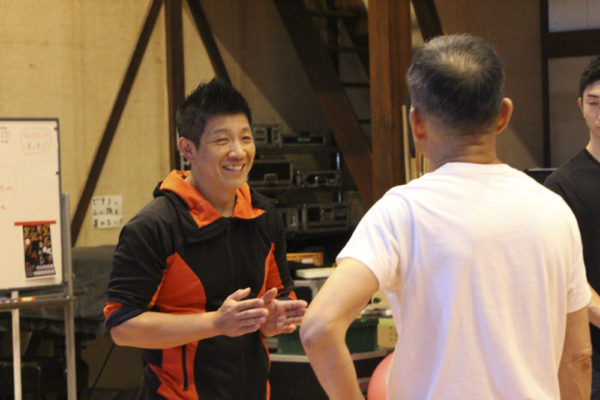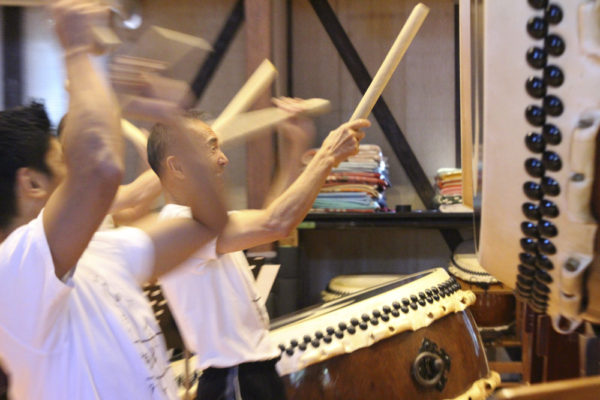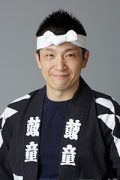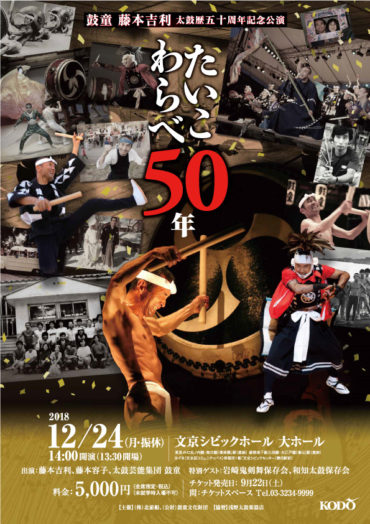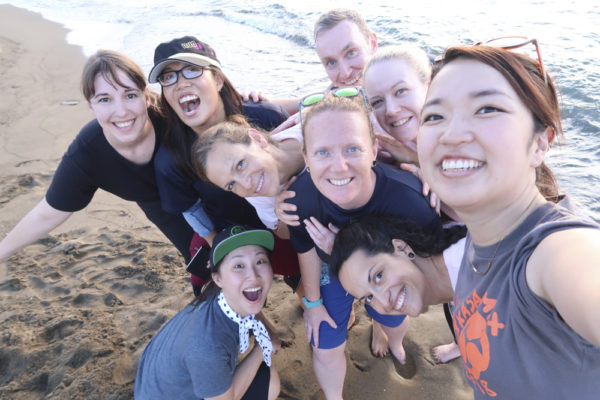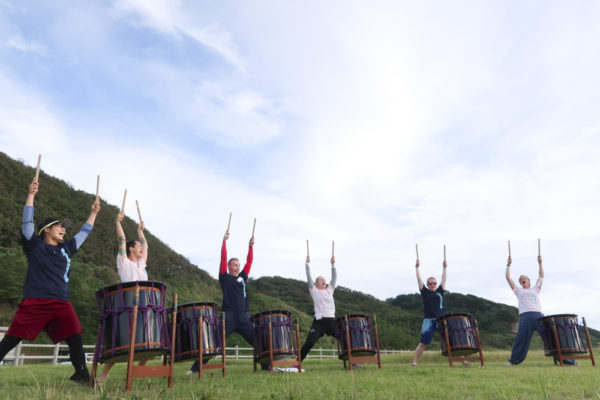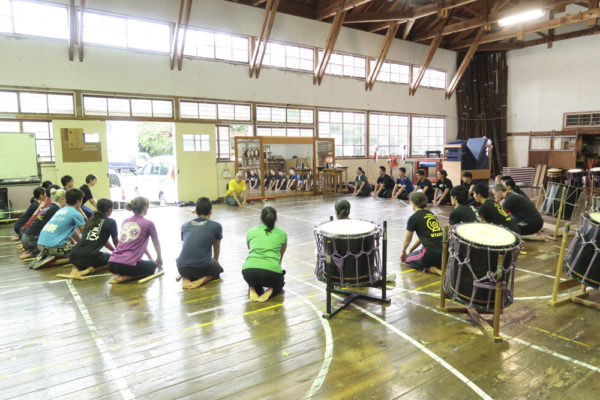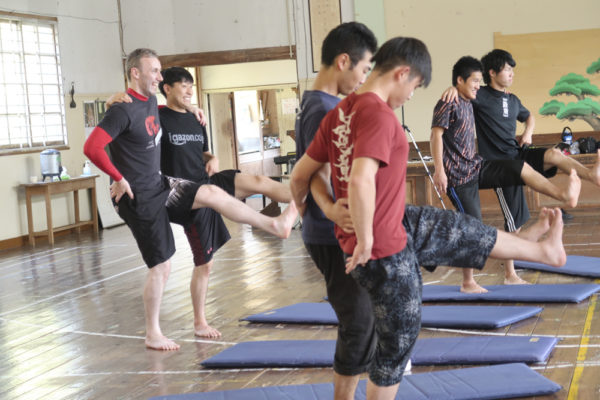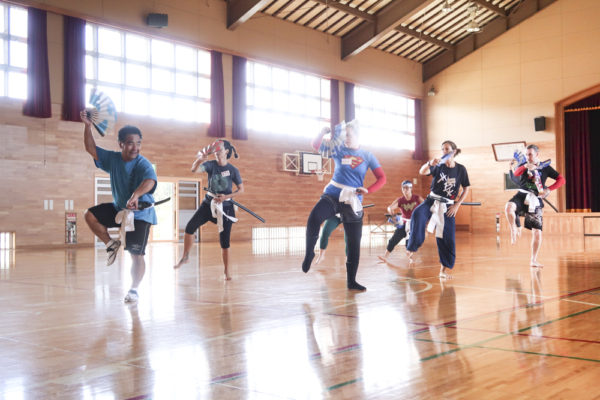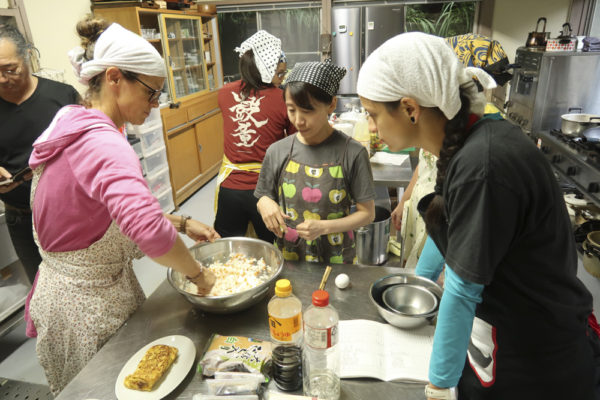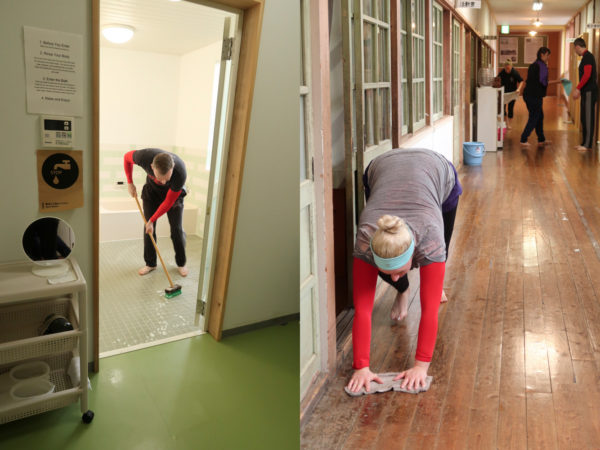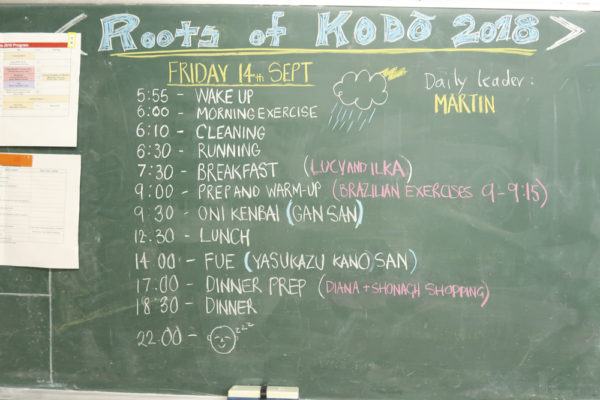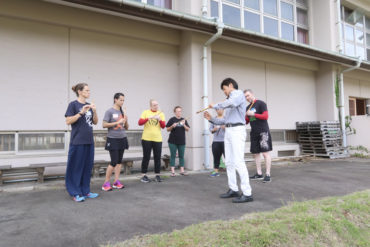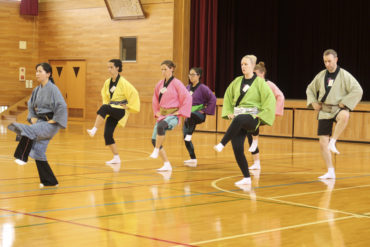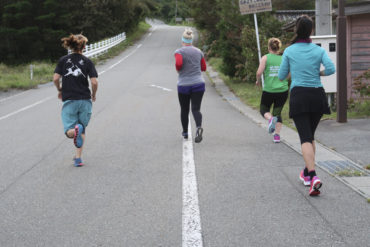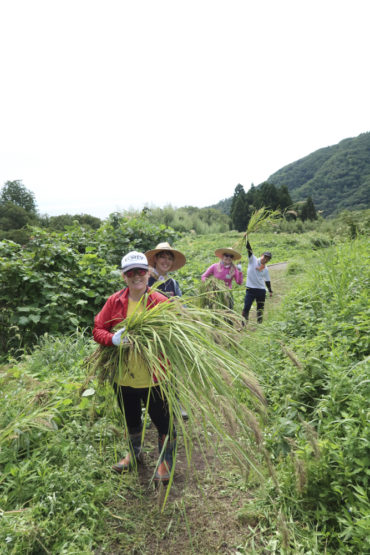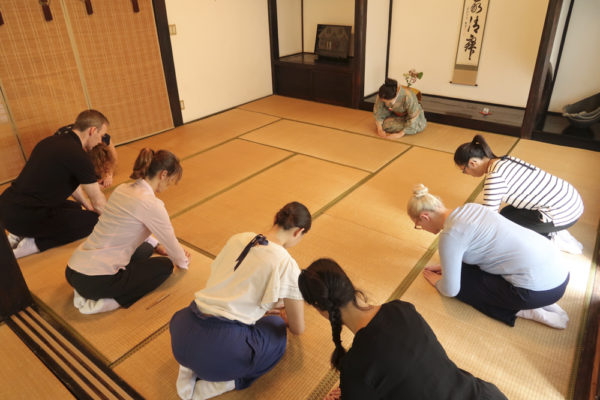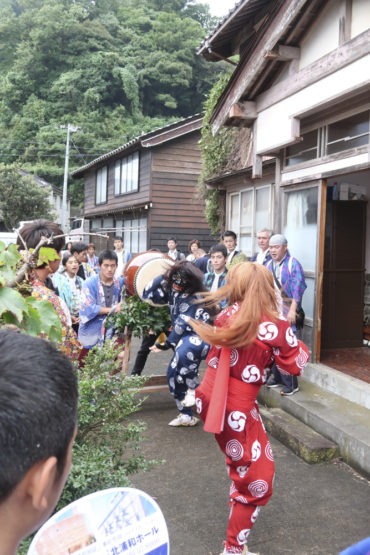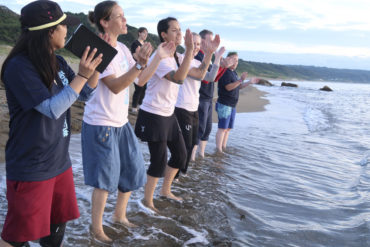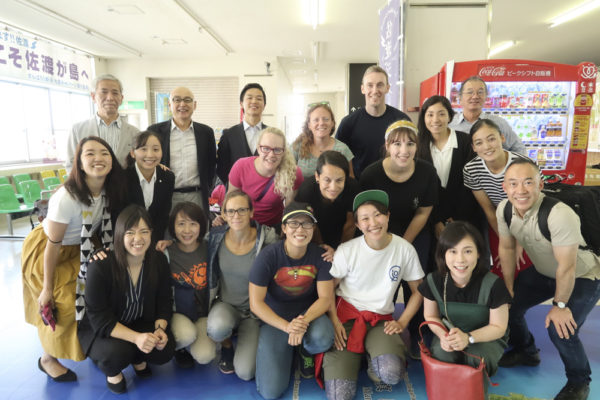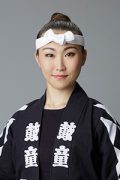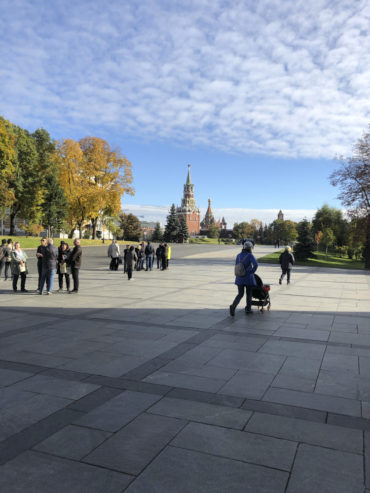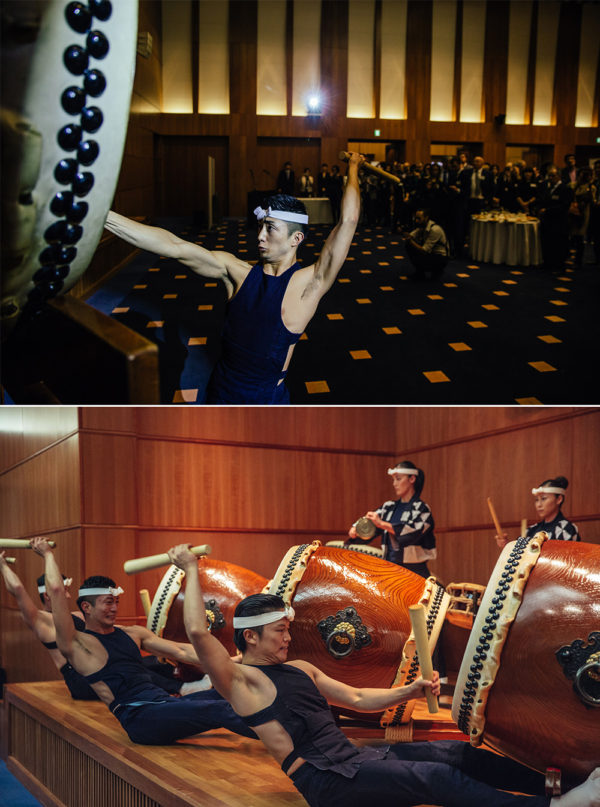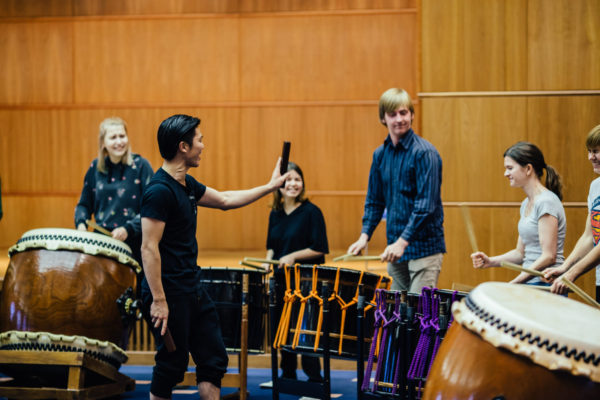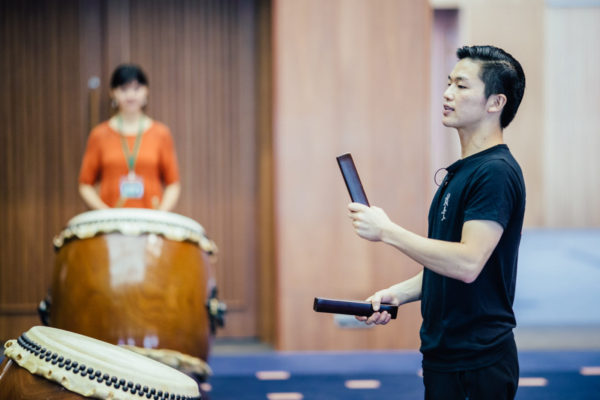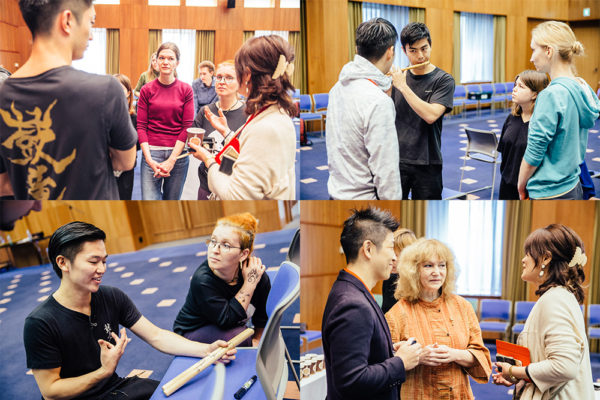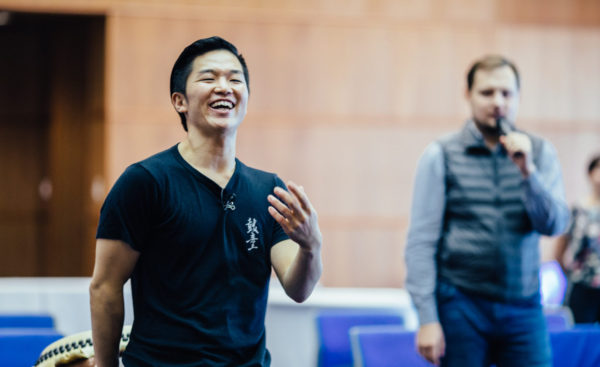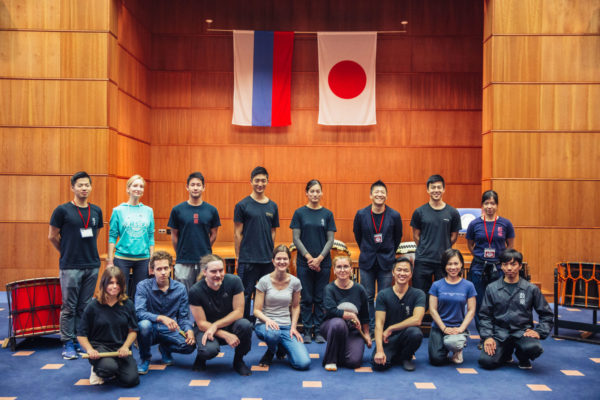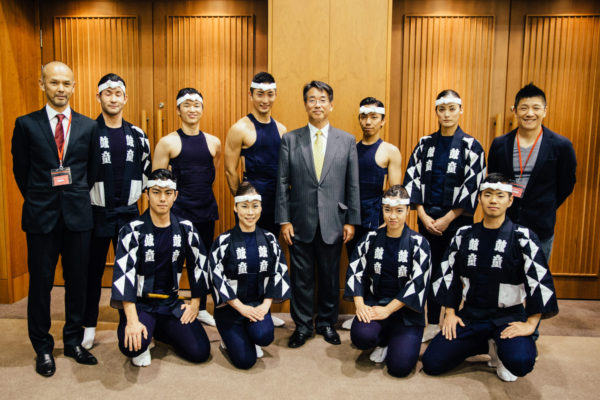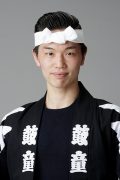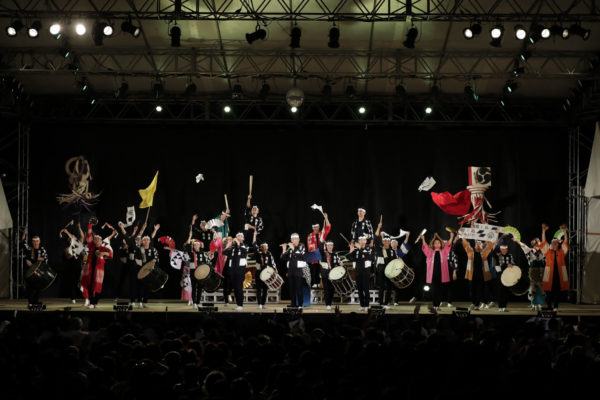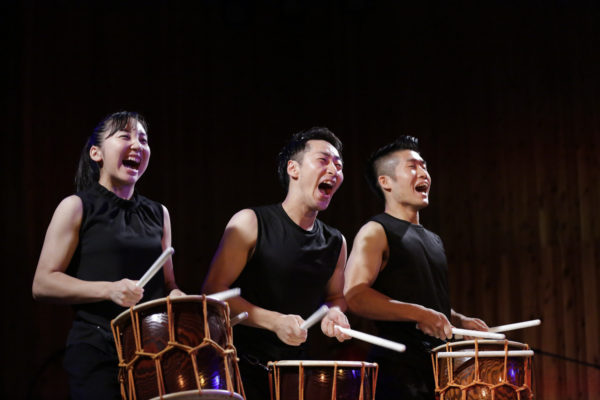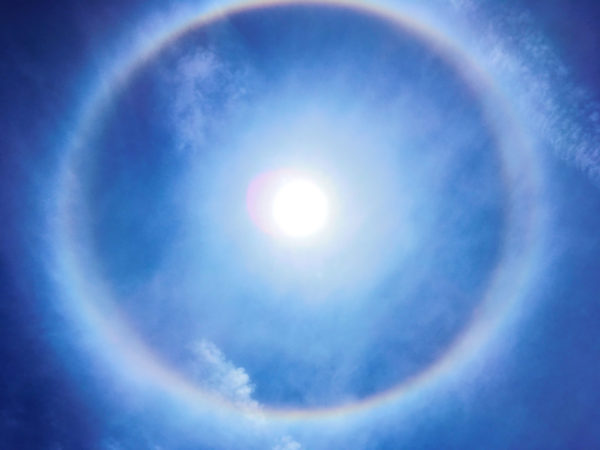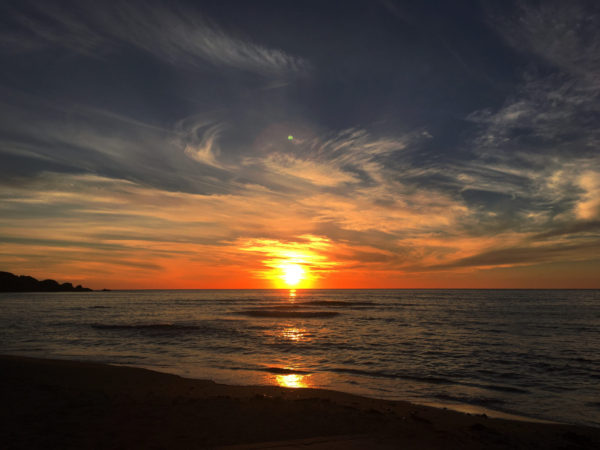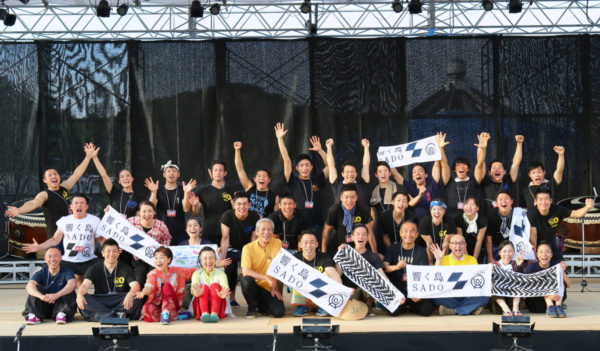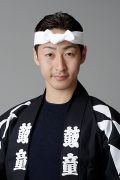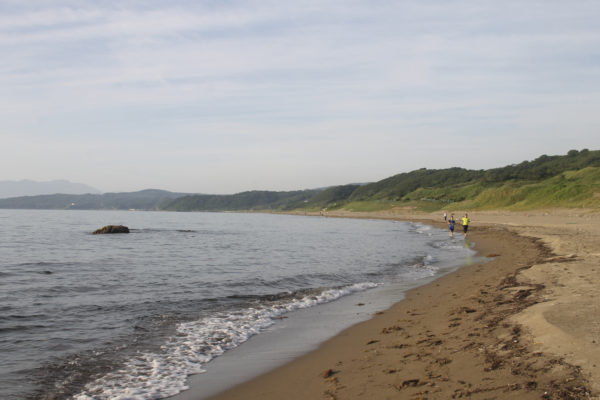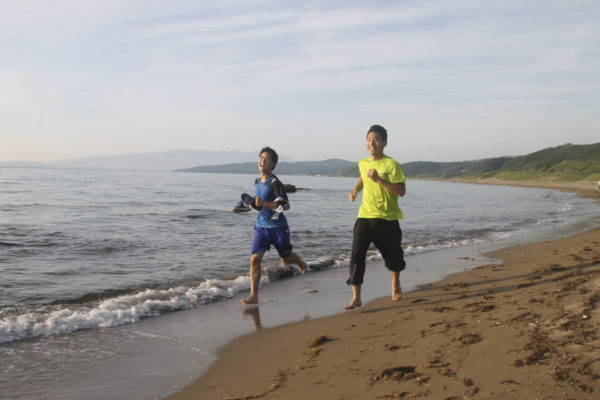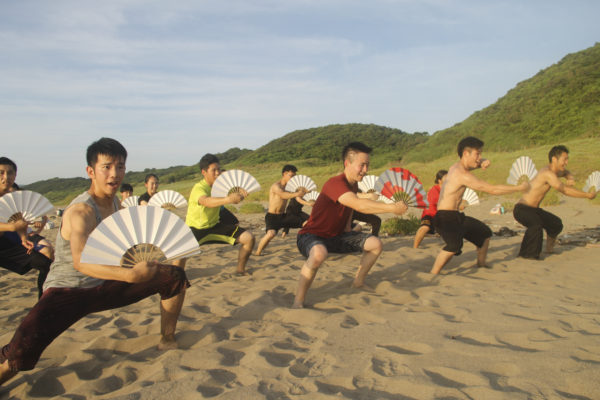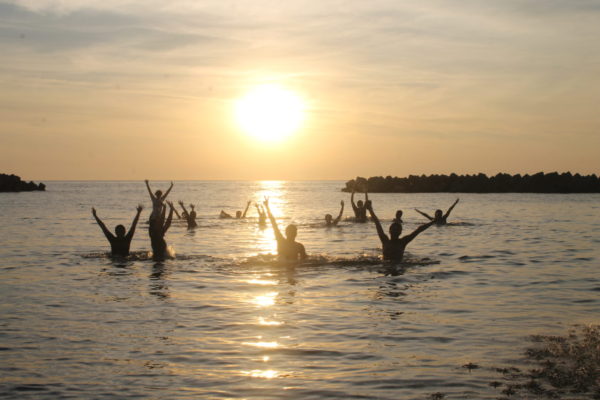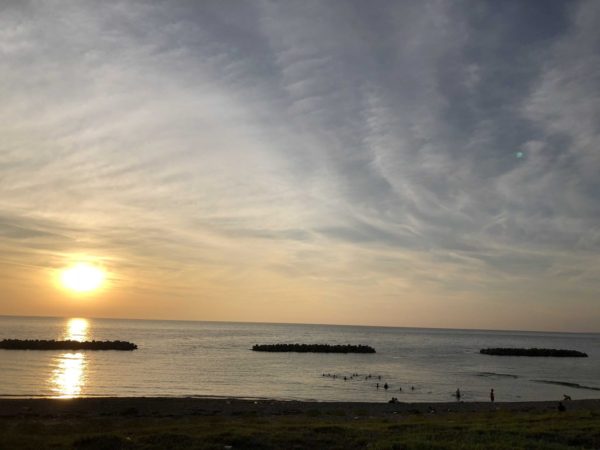“Taiko Warabe Goju-nen”: Yoshikazu Fujimoto Performance Career 50th Anniversary Concert” by Yuichiro Funabashi
Hi everyone! How are you?
As you probably already know, Kodo’s last performance this year will be “Taiko Warabe Goju-nen,” a special concert commemorating Yoshikazu Fujimoto‘s 50th milestone year as a performer.
The other day, we had rehearsals at Kodo Village and Yoshikazu showed all the junior members (which in this case means everyone!) his body and soul approach in practice.
“Your passion shows on your face AND your back.”
When I heard him say that, I felt the weight of those fifty years in his embodiment of those words.
For this performance, we will welcome Iwasaki Onikenbai Hozonkai (Iwasaki Demon Sword Dance Preservation Society), who have taught Yoshikazu Fujimoto and Kodo for many years, and Wachi Daiko Hozonkai (Wachi Taiko Preservation Society) from Yoshikazu’s hometown, Wachi, where his taiko journey began. Kodo will be there right alongside these special guests and Yoshikazu, giving our all to celebrate our most senior member.
I am really looking forward to this performance!
Kodo’s latest production MEGURU will be on stage at Bunkyo Civic Hall until Dec. 23, the day before “Taiko Warabe Goju-nen” on Christmas Eve.
I really hope you’ll take this opportunity to see Kodo’s depth and breadth as an ensemble through both of these distinct concert programs.
As I said in my New-Year greeting for 2018:
“(Yoshikazu Fujimoto) is a man who has stood apart as a pioneer in performing arts and remains in a class of his own. Watching over and raising the next generation is very important, and we have learned the magnificence of undertaking these tasks ourselves by observing many performing arts. As we celebrate the career of our group’s most senior member, we would like to express our gratitude for Kodo’s ability to carry out a wide range of activities each year. The Kodo Group looks forward to congratulating Yoshikazu along with the entire audience who gathers for this auspicious event.”

